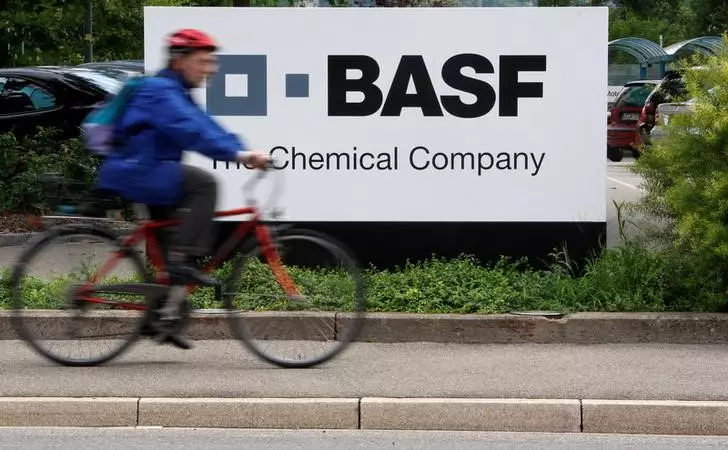BASF, a leading German chemical company, recently announced its preliminary financial projections for 2024, revealing a concerning decline in expected earnings. The forecasts project earnings before interest and taxes (EBIT) of €2 billion, a significant downturn compared to last year’s €2.2 billion and far below analyst expectations of €3.2 billion. This discrepancy highlights not just a minor setback but underscores broader systemic challenges the company is facing as it navigates a volatile market environment.
The primary driver of this diminished outlook appears to be substantial impairment charges, particularly within the battery materials segment under BASF’s Surface Technologies umbrella. These non-cash impairments total an alarming €1.9 billion, reflecting the persistent difficulties BASF encounters in adapting to fluctuating market dynamics, notably the highly competitive battery technology landscape. Furthermore, extensive restructuring efforts across all segments reveal a concerted, albeit reactive, strategy to realign the company’s operations amid these hardships.
Even as BASF witnessed increased volumes and a slight uptick in sales prices across its core businesses, these positives were ultimately insufficient to counterbalance the loss in earnings capabilities. The chemicals sector, which forms the bedrock of BASF’s operations, experienced a particularly steep decline in earnings momentum during the fourth quarter of 2024, signifying potential long-term challenges that might hinder recovery.
Interestingly, not all sectors of BASF’s operations faced the same difficulties. The Agricultural Solutions segment appears to have withstood the general downturn, reporting a notable rise in contributions relative to the previous year. This variance within BASF’s portfolio suggests potential areas for growth and resilience that the company could strategically leverage as it moves forward, particularly in agricultural markets where demand may be more stable.
However, the overall projection for total sales is not promising, with estimates declining to €65.3 billion from €68.9 billion in 2023. This downturn is attributed largely to price deflation and adverse currency fluctuations, although a minor increase in volumes has provided a sliver of hope amidst the broader slump.
While BASF anticipates a free cash flow of €0.7 billion for 2024, surpassing analyst forecasts and BASF’s own earlier estimates, this figure still reflects a stark decrease from the €2.7 billion achieved in 2023. The uncertainty surrounding net income remains palpable, particularly as contributions from equity participations are still pending. BASF’s cautious outlook suggests that it does not expect to meet the previous analyst consensus of €2.2 billion for net income in 2024 but does anticipate a significant improvement over the meager €225 million reported in 2023.
BASF’s preliminary figures for 2024 paint a challenging picture for the company’s operational landscape. The combination of impairments, restructuring costs, and external market pressures necessitates a robust strategic response to enhance resilience and capitalize on segments that are performing well. As BASF endeavors to recalibrate its business strategies, stakeholders will be closely monitoring how effectively the company navigates these turbulent waters.

